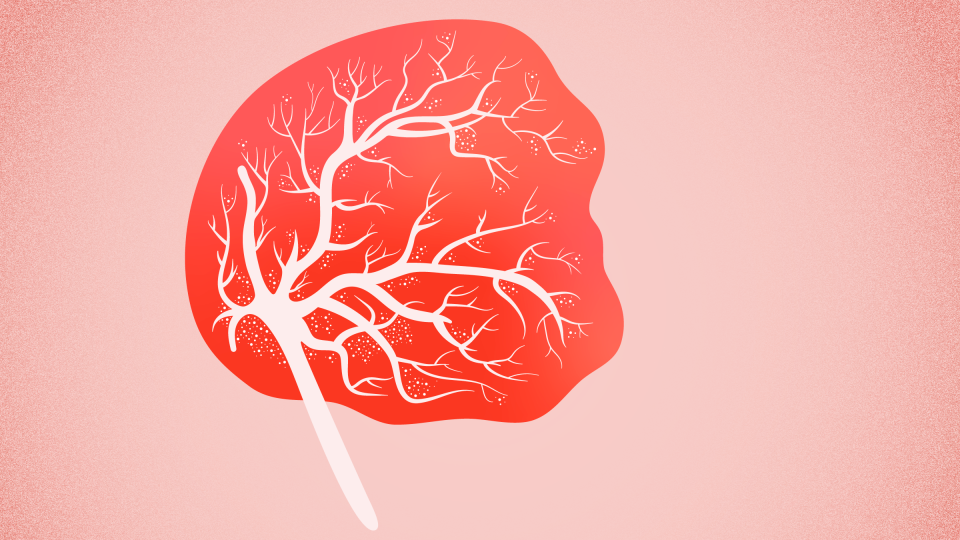Everything You Ever Wanted to Know (or Didn’t) About the Placenta

It almost feels too sci-fi to be real, but in the early days of pregnancy, the uterus is also creating something that will support the developing baby until they're born: the placenta.
It's true. Moms-to-be, your pregnant body is not only a cozy home for a fetus for around nine months, but also creates (and expels!) an organ in that time.
What the placenta does
"Patients don't ask about it often, but it's pretty cool," says Heather Ranney, a certified nurse midwife who sees patients at University of Washington Medical Center - Montlake. "The placenta starts growing in the first 10 to 12 weeks of pregnancy, and serves as a pathway for the pregnancy for blood flow and how that's established."
The placenta supports the developing baby through the umbilical cord, which ferries blood, oxygen and nutrients from the mother to the fetus. Some call this pattern of blood vessels on the placenta itself the "tree of life."
The placenta also produces and regulates hormones, including insulin, throughout pregnancy.
High-risk placenta situations
The health of the placenta says a lot about the health of the pregnancy. Sometimes, problems with the placenta can create issues.
And some issues may originate with the placenta, such as preeclampsia, gestational diabetes and birth-restricted babies, says Ranney.
Things can go wrong with how the placenta attaches, too.
The organ usually attaches to the top, side, front or back of the uterus, but sometimes it can attach in the lower part of the uterus and even partially cover the cervix , which is where the baby must go during delivery — a condition known as placenta previa, which requires close monitoring throughout pregnancy.
Placental abruption is another condition when the organ detaches too early during pregnancy, while placenta accreta is when the vessels and other attachments between the uterus and the placenta dig in too deeply and prevent it from detaching. Both conditions require quick medical attention. Postpartum hemorrhage is still the leading cause of maternal mortality.
What happens to a placenta after birth
A lot changes in the body in the minutes between giving birth to a baby and the placenta detaching and labor ending.
During pregnancy, blood volume increases by 50%, with about 750 milliliters of blood flowing per minute to the placenta by the end of the pregnancy.
"There's a lot more blood running through those arteries," explains Ranney.
After delivery, that maternal-placental circulatory system is shut down. This abrupt change raises the risk of bleeding — postpartum hemorrhage — and of a dangerous form of high blood pressure seen during pregnancy called preeclampsia.
During vaginal delivery, the placenta usually naturally detaches and comes out with a few final contractions after the baby's birth. In a cesarean section, the placenta is removed as well.
"The rule generally is that once baby has been born, after 20 minutes or so, the placenta may need assistance," says Ranney. "If you think about the fact that its origin began in the first few weeks of pregnancy, it's going to take a couple minutes to come away. All the blood vessels are interconnected. If there's brisk bleeding, that's an indication of an emergency."
Assistance may include medication or manual removal.
Yes, you can eat your placenta
On a lighter note, the word placenta is derived from the Latin word for cake, and likely refers to the typical shape of the organ. While many of us also think “delicious” when we hear the word “cake,” this is unlikely to be related to the increase in moms consuming (encapsulated) placenta.
Often made by birth doulas, dried and pulverized placenta — in pill form — is sometimes taken by new moms after birth. The reported benefits are associated with faster recovery and prevention of postpartum depression. That said, studies say there’s no conclusive evidence this actually works.
As far as the risks are concerned, Ranney says if there's any infection at all during pregnancy, it wouldn't be safe.
"The emotional benefit may be somewhat of a placebo, but it's also true that if we believe it is, it is," says Ranney. "Our big human brains are a wonderful thing. It's made from us, so each one is absolutely unique to our bodies, so I don't know if there's ever going to be a way to know what the benefit might be from ingesting it."
This increase in consumption of encapsulated placenta has also coincided with efforts to commemorate or celebrate the organ by families, including burying it in gardens. Ranney has seen a lot of placenta art, including prints made using the organ's interesting blood vessel design as a stamp. Others have carefully framed photographs.
More doctors are offering mothers the option to look at it after birth instead of quickly discarding it as medical waste.
How to keep the placenta healthy
As far as if there is anything else an expectant mom can do to support a healthy placenta — it's all the same as what's necessary in early pregnancy.
"Eating a well-balanced diet, lots of protein, lots of water," says Ranney. "The body in early pregnancy makes a quick change. Blood volume, breast tissue — everything changes fast and the earlier you get on board with that the better. It's a great time to connect with our bodies and recognize this creation that is happening."

 Healthy ideas for your inbox
Healthy ideas for your inbox





